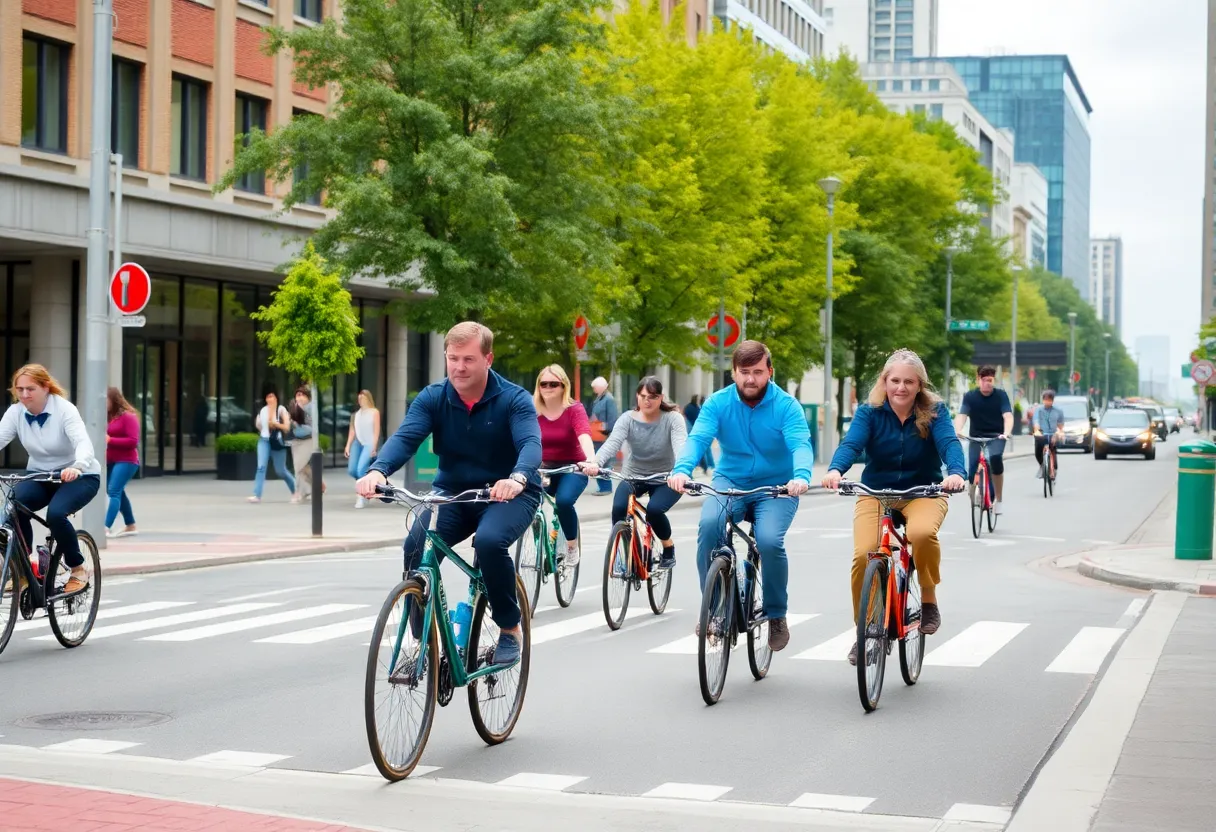News Summary
Cambridge has solidified its position as a top cycling city in the United States, significantly improving its cycling infrastructure over the years. Since 2002, city officials have worked to enhance safety for cyclists, despite facing opposition from some residents regarding bike lanes and parking concerns. With a notable surge in bike ridership and ongoing construction of separated bike lanes, Cambridge aims to balance the needs of diverse road users while promoting sustainable urban mobility.
Cambridge has established itself as a leading city for cycling in the United States, ranking second nationwide and placing Boston among the top five cities. Both cities have made significant strides in cycling infrastructure over the past two decades, significantly improving safety for cyclists and pedestrians. However, ongoing challenges, including opposition to new bike lanes and concerns over parking, highlight the complexities of urban mobility in the region.
Since 2002, there has been a major push to transform Cambridge’s streets into safer passageways for cyclists. During the early 2000s, bike crashes were alarmingly high, particularly in Inman Square, which recorded the highest number of bike accidents in Massachusetts from 2002 to 2009. Recognizing the urgent need for change, city officials initiated extensive improvements to the cycling infrastructure. This development was partly a response to traffic congestion and environmental concerns, including lawsuits aimed at improving air quality.
The city began its significant transformation in the 1990s with the introduction of the 1992 Vehicle Trip Reduction Ordinance, which aimed to promote mass transit and cycling, thereby reducing dependency on cars. As a result, from 2000 to 2010, Kendall Square underwent major development, resulting in a 14% reduction in car traffic despite the addition of 4 million square feet of new space.
As bike ridership surged, with a notable quadrupling since 2002—over 9% of commuters chose to ride bikes by 2023—the city implemented measures like the Cycling Safety Ordinance in 2019. This ordinance mandated faster development of bike lanes in priority areas, particularly following cyclist fatalities, reflecting the city’s commitment to ensuring safety for cyclists.
Despite these advancements, not all residents are entirely on board with the changes. Some community members have voiced opposition, arguing that the introduction of bike lanes often comes at the expense of street parking and may disrupt established patterns of transportation. This has led to significant political pressure, particularly on current leaders like Mayor Michelle Wu, who faces backlash over ongoing bike lane expansions. Opponents, including some local business owners and residents, have expressed concern about potential customer loss and property value changes tied to bike lane installations.
However, local businesses like Fast Phil’s barbershop have managed to adapt successfully to the evolving streetscape. Initially concerned about the impact of nearby bike lanes on their customer base, some businesses found that they could thrive in the new environment by adjusting their operations to align with the city’s commitment to multimodal transportation.
The COVID-19 pandemic complicated the situation further, causing disruptions in commuting patterns and affecting consumer behavior. Community engagement regarding bike lane projects has focused mostly on addressing parking and travel impacts rather than broader discussions about the long-term benefits of cycling infrastructure. Supporters point to the increasing bike counts—rising by more than 300% within four months of separated bike lanes opening—as evidence of the growing demand and acceptance for these changes.
As construction of separated bike lanes continues, Cambridge aims to create a cohesive network that promotes cycling safety across the city. The commitment to retaining most parking spaces while converting certain roads to one-way traffic illustrates an attempt to balance the needs of different road users.
Recent developments include a court ruling that backed the City’s authority in implementing bike lane projects, affirming the legal support for transforming urban landscapes to meet modern transportation needs. Furthermore, studies show a strong demand for cycling among residents, indicating that ongoing investments in cycling infrastructure are critical for supporting active transportation in Cambridge.
The transformation of Cambridge’s transportation landscape is an ongoing process that strives to balance the needs of all road users while steering towards a sustainable future. As the city evolves, community collaboration and open dialogue will be essential in navigating the challenges presented by the improvements aimed at promoting cycling as a safe, viable mode of transport.
Deeper Dive: News & Info About This Topic
HERE Resources
Boston Considers Styrofoam Ban Amid Environmental Concerns
Boston Kicks Off Summer with Weekend Festivities
Additional Resources
- Momentum Magazine: Bicycle Use Soars Following Installation of Separated Bike Lanes
- Wikipedia: Cycling in the United States
- The Crimson: Cambridge Cycling Intersections Photo Essay
- Google Search: Cambridge cycling infrastructure
- Momentum Magazine: Cambridge Bike Lanes Numbers
- Google Scholar: Cambridge cycling infrastructure
- The Guardian: World’s Best and Worst Cycling Infrastructure
- Encyclopedia Britannica: Bicycle Infrastructure
- The Guardian: Cycling Accessibility in Cambridge
- Google News: Cambridge bike lanes

Author: STAFF HERE BOSTON WRITER
The BOSTON STAFF WRITER represents the experienced team at HEREBoston.com, your go-to source for actionable local news and information in Boston, Suffolk County, and beyond. Specializing in "news you can use," we cover essential topics like product reviews for personal and business needs, local business directories, politics, real estate trends, neighborhood insights, and state news affecting the area—with deep expertise drawn from years of dedicated reporting and strong community input, including local press releases and business updates. We deliver top reporting on high-value events such as Boston Marathon, Head of the Charles Regatta, and Boston Harborfest. Our coverage extends to key organizations like the Greater Boston Chamber of Commerce and Associated Industries of Massachusetts, plus leading businesses in finance, biotech, and insurance that power the local economy such as Fidelity Investments, Biogen, and Liberty Mutual Insurance. As part of the broader HERE network, we provide comprehensive, credible insights into Massachusetts's dynamic landscape.





